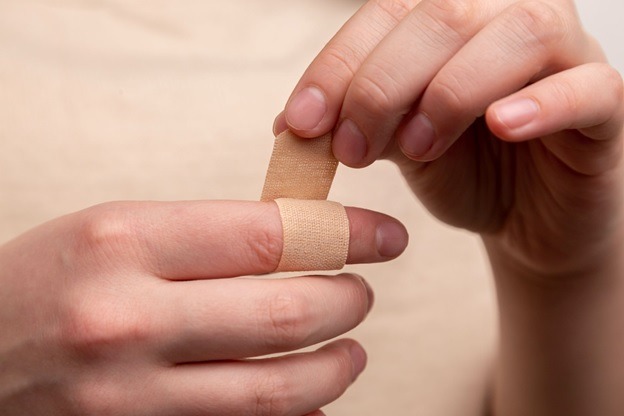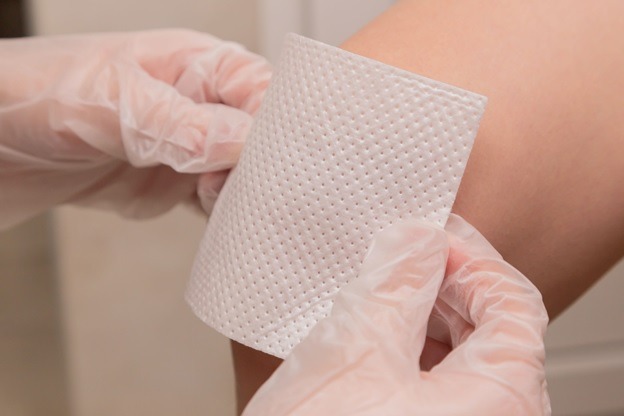
If you are like most people, you will suffer from a wound at some point in your life. Whether it is a cut, scrape, or gash, these injuries can be painful and difficult to treat. Worse, it can get infected and lead to severe complications, like sepsis.
You need to learn to practice appropriate wound care, and this article has the tips you’re looking for.
1. See a Doctor Quickly
It’s important that you see a doctor as soon as possible after you sustain an injury. If it is severe, like a deep cut or gash, seek medical attention right away. Bring yourself to the ER.
If the wound isn’t too bad and looks clean, you can probably treat it at home so long as there are no complications. Otherwise, drop by an urgent care clinic.
If you have diabetes or another condition that makes your wounds prone to infections, it’s best if you seek immediate medical attention. Some doctors may prescribe antibiotics and other medications.
During your consultation, the doctor will ask you a few questions about the wound, like when it happened and if it’s bleeding. They’ll also examine the wound to see how severe it is.
If your wound doesn’t require stitches or surgery, your doctor may give you some instructions on how to care for the injury at home, such as cleaning and bandaging the wound properly.
Some wounds can take up to four weeks to heal completely, so be sure to follow your doctor’s instructions closely until then.
2. Wash Your Hands
Before you begin treating your wound, wash your hands. This will protect the injury from any germs that might be present on your skin or under your fingernails. It also prevents you from spreading germs and bacteria to other areas of your body, resulting in an infection if these pathogens enter the wound.
If you are unable to wash your hands, such as if you are in a hospital setting, ask someone to help you clean them instead.
You should also ensure that any instruments or gauze you are using to treat the wound have been cleaned with an antiseptic solution to prevent germs from spreading and reduce the risk of infection.
If your wound is located on a part of your body where it is difficult for you to reach, ask someone else to do this step for you. Alternatively, use an alcohol wipe instead of water and soap when cleaning them off if possible.
3. Stop the Bleeding

If your wound is bleeding, you need to stop it as soon as possible. Apply pressure to the area with a clean cloth or bandage. If the bleeding doesn’t stop after a few minutes, seek medical attention.
If you are unable to control the bleeding on your own, go to the hospital or call an ambulance. Do not apply ice directly to the wound as this can cause further damage and delay healing.
When cleaning a wound that is actively bleeding, use gentle pressure and avoid scrubbing harshly at the injury. Doing so can aggravate it and increase blood loss.
Remember: if in doubt, always consult a doctor!
4. Cover the Wound Correctly
Covering the wound can help protect it from any dirt or germs that might enter it and cause an infection. It also prevents you from scratching at your injury, which could open up old scabs and delay healing time by several days or weeks.
The best way to cover a wound is with sterile gauze bandages or adhesive tape strips placed over them. These should be replaced every day until they no longer need dressing changes anymore (these usually last two to three weeks).
You’ll know when this happens because there will no longer be blood oozing out into the cloth used as dressings. Use tweezers into alcohol beforehand so that they don’t contaminate your wound as well during the removal.
If you are unable to find sterile bandages or tape, use a clean cloth to cover the wound instead. Avoid using materials like cotton balls as these can easily become lodged in the injury and cause further damage.
Keep an eye on your wound and make sure that it doesn’t start bleeding again after you’ve applied a dressing. If it does, apply pressure immediately with a fresh cloth or bandage.
When caring for your wound, be vigilant about any changes in its appearance such as increased swelling, redness around the edges, discharge (pus), foul odor emanating from the injury site, or pain that seems more intense than what you originally felt after sustaining the injury.
These could all be signs of infection and should warrant immediate medical attention if they occur, so do not ignore them. Do not use any over-the-counter medications.
Hey welcome to my blog . I am a modern women who love to share any tips on lifestyle, health, travel. Hope you join me in this journey!

Speak Your Mind